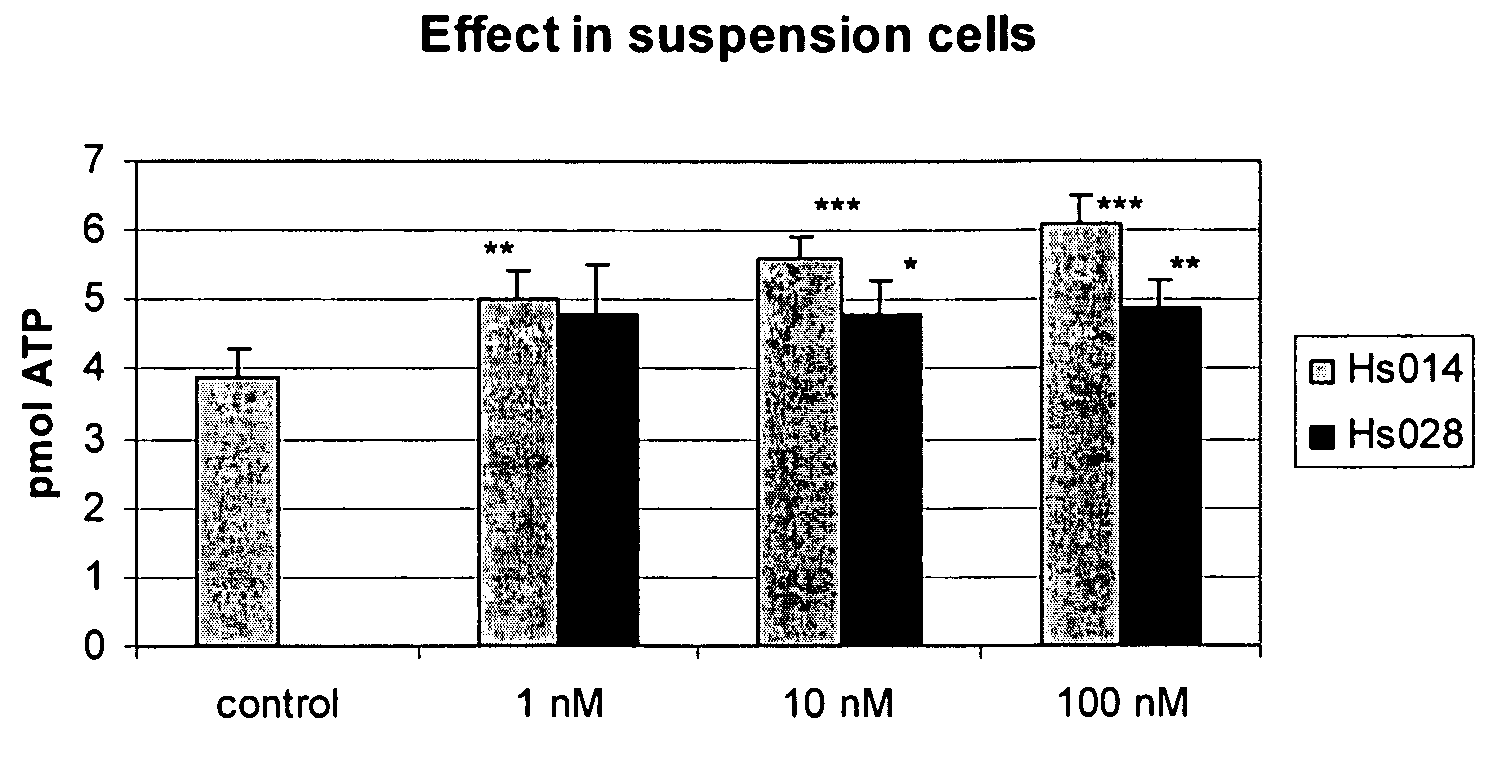Treatment of disease or injury of the nervous system using agents that decrease the activity of the melanocortin 4 receptor
- Summary
- Abstract
- Description
- Claims
- Application Information
AI Technical Summary
Benefits of technology
Problems solved by technology
Method used
Image
Examples
example 1
Preparation of the LVW and Neurosphere Culture Procedure
[0081]The anterior lateral wall of the lateral ventricle wall (LVW) of 5 week old mice was enzymatically dissociated at 37° C. for 20 min in 0.8 mg / mL hyaluronidase and 0.5 mg / mL trypsin in DMEM containing 4.5 mg / mL glucose and 80 units / mL DNase. The cells were diluted in 5 mL of DMEM / F12 medium (containing B27 supplement, 125 mM HEPES Ph 7.4, 100 units / mL penicillin, and 100 micrograms / mL streptomycin). After passing through a 70 micron strainer, the cells were pelleted at 240×g for 5 minutes, washed and recentrifuged. The supernatant was subsequently removed and the cells resuspended in medium supplemented with 20 nanogram / mL EGF, plated out in culture dishes and incubated at 37° C. Neurosphere cultures were ready to be split approximately 7 days after plating.
[0082]To split the neurosphere cultures, neurospheres were collected by centrifugation at 240×g for 5 minutes. The supernatant was discarded and the neurospheres were r...
example 2
Expression of MC4R; RT-PCR Analysis
[0083]Neurospheres were prepared from the LVW as stated in example 1 above. Three days after the first split, the neurospheres were harvested and total RNA was isolated using QIAGEN's RNeasy Mini Kit according to the manufacturer's instructions. LVW and rest of brain total RNA was prepared in identical fashion to that of neurosphere total RNA. Prior to the RT-PCR, total RNA was DNase (Ambion) treated (1 unit for each 5 micrograms of total RNA) at 37° C. for 15 min, followed by heat inactivation at 75° C. for 10 min. Invitrogen's One-Step RT-PCR Kit was used to detect the presence of mRNA corresponding to the MC4R. Briefly, 12.5 ng of total RNA was used in each reaction, with an annealing temperature of 58° C. To further ensure that genomic contamination of the total RNA did not give rise to false positive results, an identical reaction with Taq polymerase alone was run in parallel with the experimental RT-PCR. The reactions were electrophoresed on ...
example 3
MC4R Antagonist Treatment of Cells from Example 1 Grown in Suspension Medium or as Adherent Culture
[0085]HS014 and HS028 were purchased from Sigma Aldrich.
[0086]Cells were harvested split as in example 1, except for omission of the growth factors in the media, and seeded as suspension cells, at a density of 10,000 cells / well on 96-well plates in DMEM / F12 supplemented with 1, 10 or 100 nM MC4R antagonist or without (control cells). Alternatively, adherent cells were seeded at a density of 30,000 cells / well on poly-D-lysine-coated 96-well plates in DMEM / F12 supplemented with 1% fetal calf serum (FCS). When the cells had adhered (after 4 hours), the medium was changed to serum-free medium, and 1, 10 or 100 nM HS014, HS028, or other test compounds were added.
In Vitro Proliferation Assays
[0087]Intracellular ATP levels have previously been shown to correlate to cell number [52]. The following experiment was performed in quadruplicate. HS014 or HS028 were added and cells were incubated at ...
PUM
| Property | Measurement | Unit |
|---|---|---|
| Fraction | aaaaa | aaaaa |
| Fraction | aaaaa | aaaaa |
| Fraction | aaaaa | aaaaa |
Abstract
Description
Claims
Application Information
 Login to View More
Login to View More - R&D
- Intellectual Property
- Life Sciences
- Materials
- Tech Scout
- Unparalleled Data Quality
- Higher Quality Content
- 60% Fewer Hallucinations
Browse by: Latest US Patents, China's latest patents, Technical Efficacy Thesaurus, Application Domain, Technology Topic, Popular Technical Reports.
© 2025 PatSnap. All rights reserved.Legal|Privacy policy|Modern Slavery Act Transparency Statement|Sitemap|About US| Contact US: help@patsnap.com



